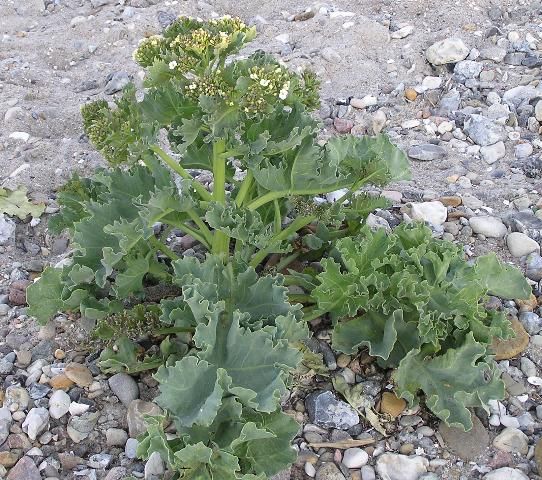Sea Kale—Crambe maritima L.1
Sea kale is also called sea-colewort, scurvy grass, and halmyrides. It is a hardy perennial whose shoots are similar to asparagus in the way they grow from the roots. However, the leafy top does not resemble asparagus. The plant grows to 2 feet, with large, heavy, glossy green leaves that are fringed or curled on the edges. The edible, young, tender, whitened shoots arise from the roots each spring in areas where it is adapted. Like asparagus, sea kale is not well adapted to Florida, for it requires a cool, moist climate. It grows wild abundantly on the West European seaboard, especially in the British Isles.

Credit: Joachim Müllerchen, CC BY-SA 2.0 DE
Culture
To produce the crop, seeds or cuttings are planted in beds where the roots are maintained for several years. As the young shoots emerge from the roots upon resumption of favorable growing conditions each spring, they are blanched (whitened) by heaping soil upon them or by covering with a suitable device such as a pot to exclude light. Young shoots are harvested when 4–5 inches long, crisp, and tender before leaves start to expand.
Do not confuse sea kale with sea-kale cabbage, an altogether different vegetable.
Use
Its name comes from its use on long sea voyages. The Romans stored it in pickled form aboard ship and fed it to the crews to prevent scurvy. In fresh form, it is cooked and used like asparagus. Both the young shoots and very small leaves are eaten.


